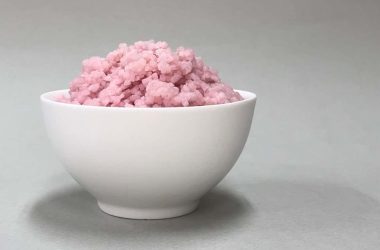A Braarudosphaera bigelowii cell, with a black arrow displaying its nitrogen-fixing organelle
Tyler Coale, College of California, Santa Cruz
Within the 3.5 billion years since life first developed on Earth, it was thought that once-free-living micro organism had merged with different organisms on simply three events, making this an exceedingly uncommon evolutionary occasion. Now, a fourth instance has been discovered, in a single-celled alga frequent within the oceans.
These algae had been thought to “repair” nitrogen – convert atmospheric nitrogen into useable ammonia – with the assistance of a bacterium. Tyler Coale on the College of California, Santa Cruz, and his colleagues have now proven that this bacterium has developed into a brand new mobile construction, or organelle.
It’s the first identified nitrogen-fixing organelle, or nitroplast, says Coale, and may very well be the important thing to the success of those algae. “It seems to be a profitable technique for them,” he says. “These are very widespread algae. We discover them all around the world’s oceans.”
It’s fairly frequent for one species to reside contained in the cells of one other in a mutually helpful relationship referred to as endosymbiosis. As an illustration, cells within the roots of legumes akin to peas host nitrogen-fixing micro organism. The success of cockroaches is partly as a result of endosymbiotic micro organism that produce important vitamins. Some cells even host a number of endosymbionts.
Whereas endosymbiotic relationships can grow to be very shut, in nearly all instances, the organisms stay distinct. For instance, legumes purchase their root micro organism from the soil. And whereas the cockroach micro organism are handed down in eggs, they reside in specialised cells, not in each cell.
However in three instances, endosymbionts have merged with their hosts to grow to be a elementary a part of them. Vitality-producing mitochondria arose from the merger of a bacterium with one other easy cell, forming the advanced cells that gave rise to animals, vegetation and fungi.
Crops arose when a cyanobacterium mixed with a posh cell to type the chloroplast, the organelle that carries out photosynthesis. And round 60 million years in the past, one other cyanobacterium merged with an amoeba, forming a distinct photosynthetic organelle referred to as a chromatophore, discovered solely in a couple of species of Paulinella.
It has been suspected for greater than a decade {that a} cyanobacterium generally known as UCYN-A dwelling throughout the single-celled alga Braarudosphaera bigelowii has grow to be an organelle. Nevertheless, finding out the partnership was troublesome till workforce member Kyoko Hagino at Kochi College in Japan discovered methods of conserving B. bigelowii alive within the lab.
This allowed the workforce to make use of a way referred to as delicate X-ray tomography to observe what occurs because the algal cells divide. From this, it was found that UCYN-A divides in live performance with the algal cell, with every daughter cell inheriting one UCYN-A. “We didn’t know the way this affiliation was maintained earlier than this,” says Coale.
The workforce additionally discovered that round half of the 2000 or so totally different proteins inside UCYN-A come from the algal host, somewhat than being made inside UCYN-A.
Lots of the imported proteins assist UCYN-A repair nitrogen, says Coale. “I believe it’s being souped up by the algal cell to provide extra nitrogen than it wants for itself.”
There additionally appears to be a specialised system for delivering proteins to UCYN-A, as there may be for different organelles. All of the imported proteins have an additional part considered an “deal with label” marking them for supply to UCYN-A.
There is no such thing as a universally accepted definition of an organelle, says Jeff Elhai at Virginia Commonwealth College, however many biologists regard coordinated division and the importing of proteins as key.
“Each bins are checked by Coale,” says Elhai. “Even to the semantic purists, UCYN-A have to be counted as an organelle, becoming a member of mitochondria, chloroplasts and chromatophores.”
The manufacture and use of nitrogen fertilisers is a significant supply of greenhouse fuel emissions in addition to an expense for farmers. So there may be quite a lot of curiosity in modifying crop vegetation to allow them to repair their very own nitrogen as legumes do.
One option to obtain this may be to equip their cells with nitroplasts and Elhai has put collectively a proposal for how this could be done. However UCYN-A isn’t start line as a result of it’s far too depending on B. bigelowii, he says.
As an alternative, Elhai envisages beginning with cyanobacteria which have solely simply began down the street to changing into nitroplasts and don’t depend on imported proteins, in order that they may very well be simply added to a variety of crop vegetation.
Nonetheless, Elhai agrees with Coale that finding out B. bigelowii may assist us perceive learn how to combine nitrogen fixation right into a plant cell.
Subjects:












